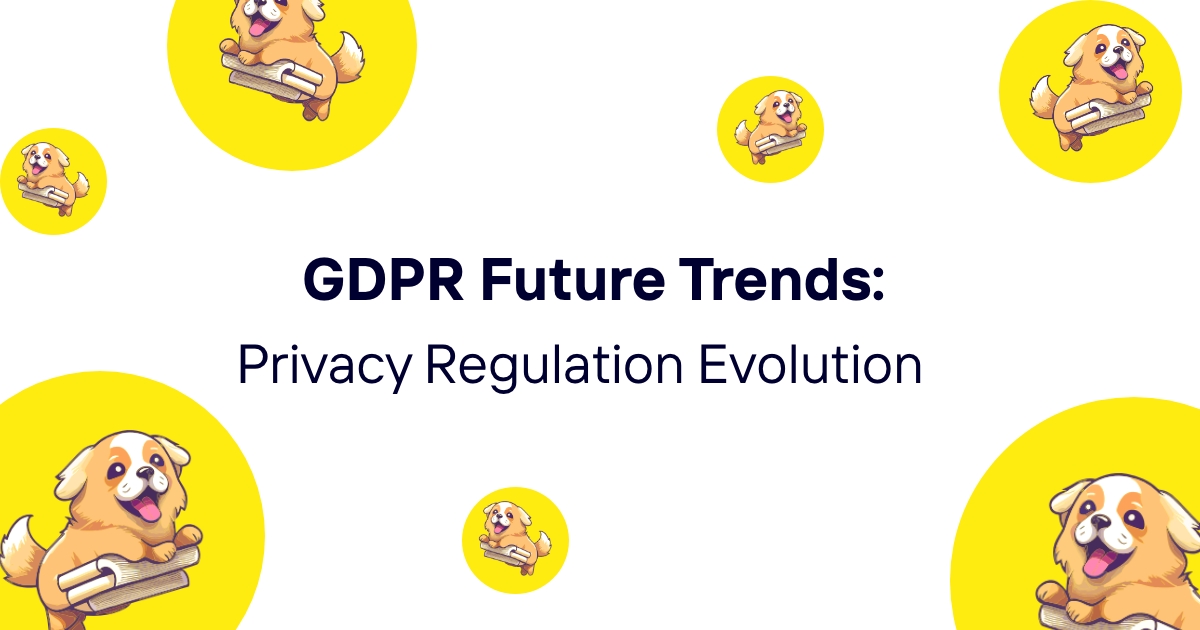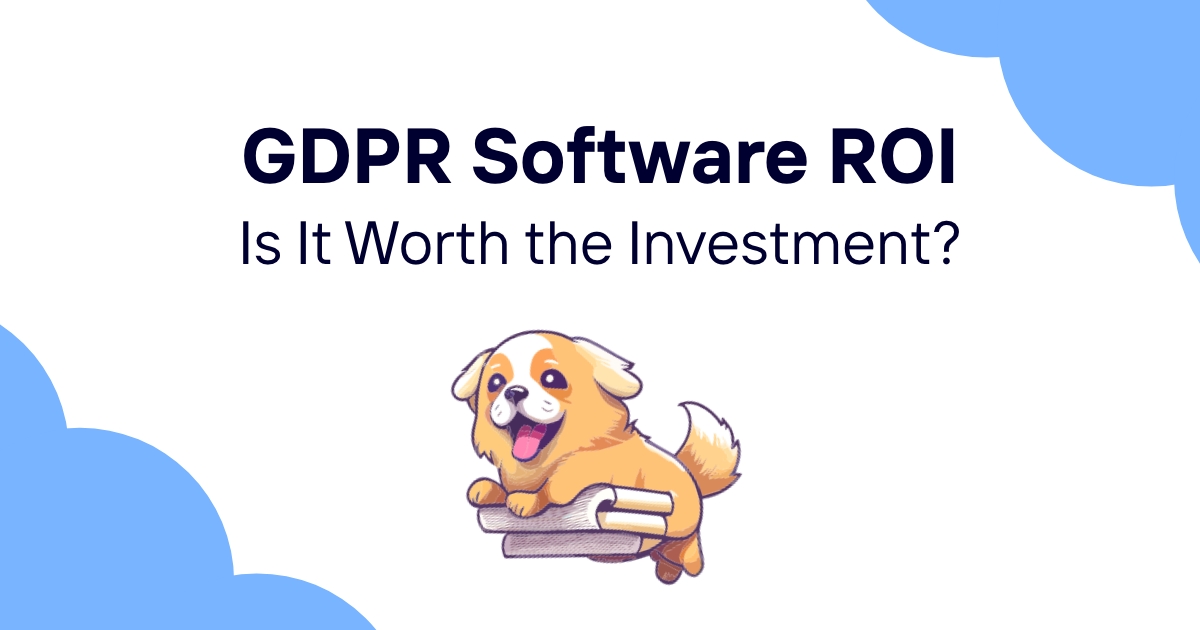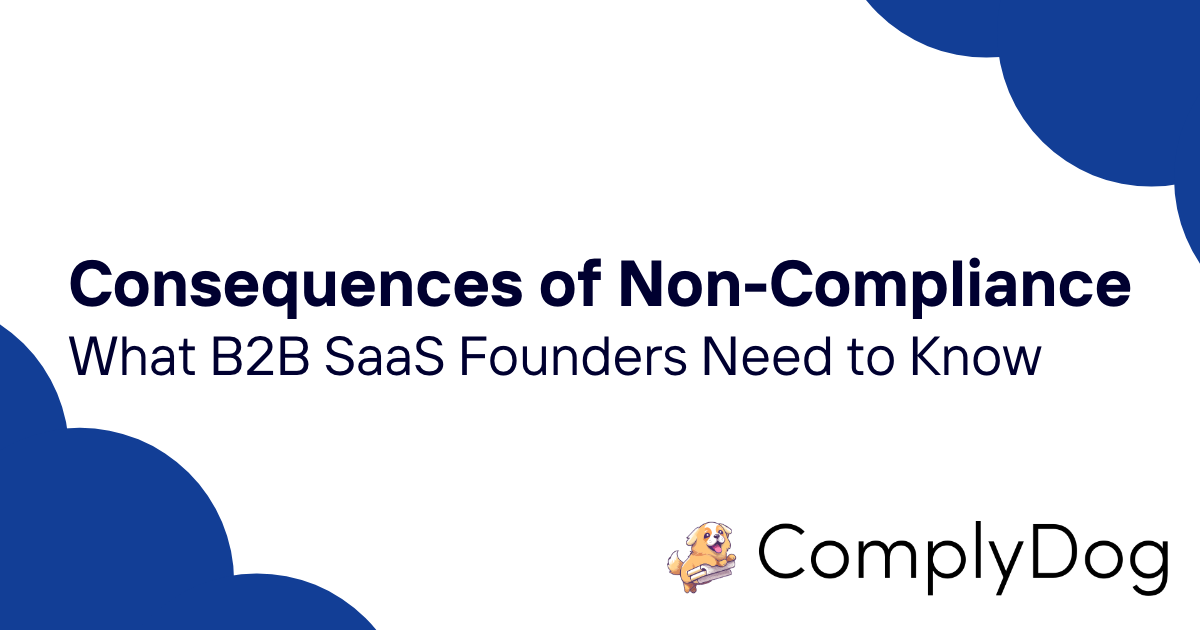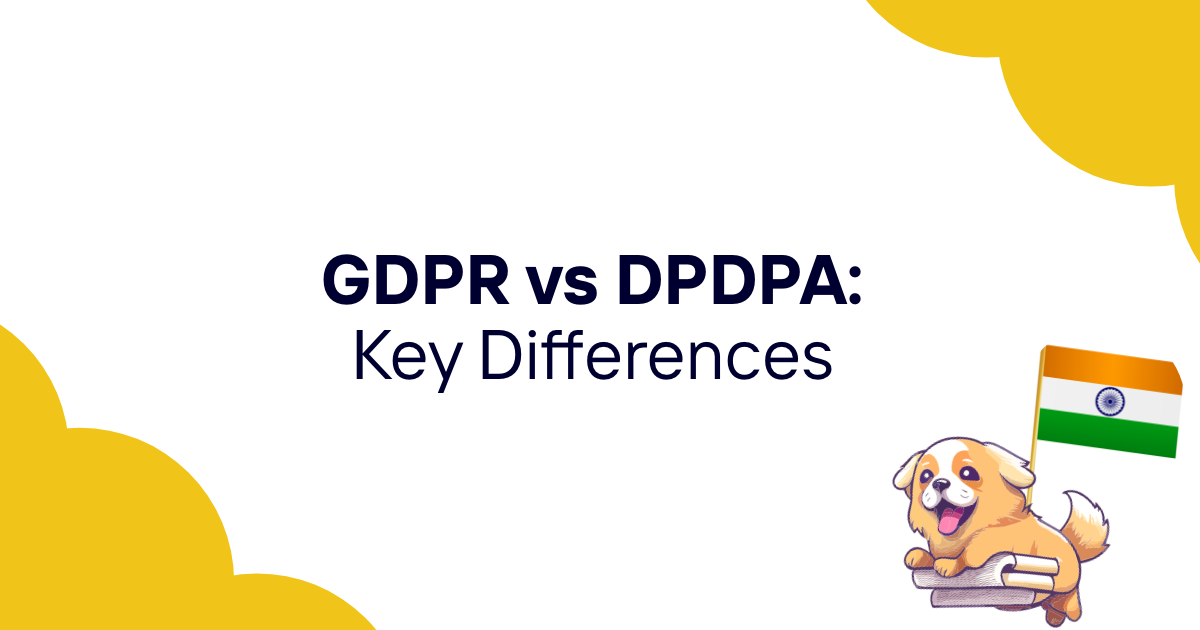GDPR continues evolving through enforcement actions, regulatory guidance, and technological developments that reshape privacy compliance requirements. Organizations focusing only on current compliance miss strategic opportunities to prepare for emerging trends that will define privacy protection's future.
The regulatory landscape shifts rapidly as authorities gain enforcement experience while new technologies create privacy challenges that existing regulations struggle to address comprehensively. Forward-thinking organizations anticipate these changes to maintain competitive advantages through privacy leadership.
This guide analyzes emerging GDPR trends and privacy regulation evolution while providing strategic guidance for organizations preparing for the future of privacy compliance and protection.
GDPR Evolution Since Implementation
Regulatory Learning and Refinement
Supervisory authorities have gained substantial enforcement experience since 2018, leading to more sophisticated investigation techniques and penalty calculation methodologies.
Regulatory guidance evolution demonstrates increasing focus on practical implementation challenges while providing clearer expectations for organizational compliance across different business sectors.
Cross-border cooperation mechanisms have matured significantly, enabling coordinated enforcement actions that affect multinational organizations more effectively than early GDPR implementation.
Case law development through regulatory decisions and court rulings clarifies GDPR interpretation while establishing precedents that influence future enforcement and compliance expectations.
Enforcement Pattern Maturation
Early enforcement focused primarily on obvious violations and high-profile cases, while current enforcement addresses systemic compliance failures and sophisticated privacy program deficiencies.
Penalty calculation has become more predictable as authorities apply consistent methodologies while considering organizational characteristics and compliance efforts more systematically.
Investigation sophistication includes technical audits and comprehensive privacy program assessment rather than just policy review and documentation examination.
Settlement practices have evolved to include ongoing monitoring and compliance enhancement requirements beyond traditional financial penalties and corrective orders.
Organizational Response Evolution
Privacy program maturity has advanced significantly as organizations move beyond basic compliance to strategic privacy management and competitive advantage development.
Technology adoption for privacy protection has accelerated dramatically, with organizations investing in comprehensive privacy platforms rather than isolated compliance tools.
Internal expertise development has grown substantially as organizations build privacy capabilities rather than relying primarily on external legal counsel and consultants.
Business integration of privacy considerations has progressed from compliance afterthought to strategic business planning component affecting product development and market positioning.
Market Impact Assessment
Customer privacy expectations have increased significantly, with privacy protection becoming a key factor in purchasing decisions and brand loyalty development.
Competitive differentiation through privacy leadership has emerged as organizations use privacy capabilities to gain market advantages and customer trust.
Investment in privacy technology has grown exponentially as organizations recognize privacy protection as business enabler rather than just regulatory requirement.
Industry specialization in privacy services has developed sophisticated markets for privacy tools, consulting, and professional services supporting organizational compliance needs.
Emerging Privacy Regulation Trends
Regulatory Scope Expansion
Geographic expansion of comprehensive privacy regulations includes new jurisdictions implementing GDPR-inspired laws with varying requirements and enforcement approaches.
Sectoral regulation development addresses industry-specific privacy challenges including healthcare, financial services, and education with specialized requirements beyond general privacy law.
Organizational size coverage expansion includes smaller organizations in privacy regulation scope while providing practical implementation guidance for resource-constrained entities.
Processing activity specificity increases as regulations address particular data uses including artificial intelligence, behavioral advertising, and automated decision-making with specialized requirements.
Enhanced Individual Rights
New individual rights development includes data portability expansion, algorithmic transparency requirements, and enhanced consent withdrawal mechanisms.
Right to explanation evolution addresses automated decision-making transparency while requiring organizations to provide meaningful information about algorithmic processing affecting individuals.
Collective rights mechanisms enable group privacy protection through representative actions and class-based privacy rights enforcement expanding beyond individual complaint procedures.
Children's rights enhancement provides specialized protection for minors including enhanced consent requirements and specific safeguards for age-appropriate processing activities.
Accountability and Transparency
Mandatory transparency reporting requires organizations to publish regular privacy protection summaries while demonstrating compliance efforts and privacy program effectiveness.
Enhanced audit requirements include mandatory third-party privacy assessments while providing independent verification of organizational privacy protection capabilities.
Public registry development includes processing activity disclosure requirements while enabling stakeholder and regulatory visibility into organizational data processing activities.
Certification scheme expansion provides standardized privacy protection verification while enabling organizational demonstration of privacy capability and compliance commitment.
Enforcement Enhancement
Administrative penalty increases include higher maximum fines and more sophisticated penalty calculation methodologies that better reflect organizational capability and violation severity.
Criminal liability expansion addresses serious privacy violations through individual prosecution while creating personal accountability for privacy failures and systematic compliance violations.
Regulatory authority power enhancement includes broader investigation capabilities and additional enforcement tools beyond traditional penalties and corrective orders.
Cross-border enforcement coordination improvement enables more effective regulatory cooperation while addressing jurisdictional challenges in global privacy violation investigation and response.
Technology Impact on Privacy Law
Artificial Intelligence Regulation
AI-specific privacy requirements address algorithmic transparency, bias prevention, and automated decision-making oversight while ensuring privacy protection throughout AI system development and deployment.
Machine learning governance includes data minimization requirements for AI training while addressing privacy protection throughout algorithm development and deployment processes.
Algorithmic audit requirements mandate systematic evaluation of AI systems affecting individuals while ensuring transparency and accountability in automated decision-making processes.
Consider how AI privacy requirements integrate with systematic compliance frameworks and comprehensive privacy program development.
Biometric Data Protection
Enhanced biometric data regulation addresses collection, processing, and storage of biological characteristics while providing specialized protection for particularly sensitive personal data.
Facial recognition restrictions include specific consent requirements and usage limitations while addressing public space monitoring and commercial application privacy concerns.
Genetic information protection provides specialized safeguards for DNA data while addressing healthcare, research, and commercial genetics applications with appropriate privacy protection.
Behavioral biometrics regulation addresses keystroke patterns, gait analysis, and other behavioral identification methods while ensuring appropriate consent and protection measures.
Internet of Things Governance
IoT device privacy requirements include privacy-by-design mandates and default privacy settings while ensuring comprehensive protection throughout connected device ecosystems.
Sensor data protection addresses ambient data collection through smart devices while ensuring appropriate consent and control mechanisms for environmental monitoring activities.
Device security standards include privacy protection requirements while ensuring IoT devices implement appropriate technical safeguards throughout product lifecycle management.
Data sharing limitations restrict IoT data flows while providing users with meaningful control over information sharing across connected device ecosystems and platform relationships.
Cloud and Edge Computing
Data residency requirements address cloud processing location while ensuring appropriate control over geographic data storage and processing in distributed computing environments.
Edge computing privacy includes local processing requirements while addressing privacy protection in distributed computing architectures that process data closer to collection points.
Multi-cloud governance addresses privacy protection across multiple cloud providers while ensuring consistent protection regardless of infrastructure complexity and vendor relationships.
Quantum computing preparation includes quantum-resistant encryption requirements while addressing future cryptographic challenges that could affect privacy protection effectiveness.
Enforcement Pattern Analysis
Investigation Sophistication Evolution
Technical audit capabilities have expanded significantly as regulatory authorities develop specialized expertise in privacy technology assessment and system evaluation.
Cross-border investigation coordination enables comprehensive assessment of multinational organizations while addressing jurisdictional challenges in global privacy compliance verification.
Industry specialization development includes sector-specific enforcement teams while providing specialized expertise for complex industry privacy challenges and compliance requirements.
Private enforcement growth includes individual lawsuits and class actions while supplementing regulatory enforcement with civil litigation that creates additional compliance incentives.
Penalty Calculation Refinement
Methodology standardization provides more predictable penalty calculation while ensuring consistent enforcement across different supervisory authorities and violation circumstances.
Aggravating factor emphasis includes repeat violations, obstruction of investigations, and systematic compliance failures while increasing penalties for organizations demonstrating poor privacy governance.
Mitigating factor recognition includes cooperation with authorities, proactive compliance improvements, and comprehensive privacy programs while providing penalty reduction incentives for good faith compliance efforts.
Settlement negotiation expansion enables compliance agreement alternatives to traditional penalties while providing organizations with opportunities to demonstrate privacy commitment through enhanced protection measures.
Regulatory Cooperation Enhancement
Lead authority procedures have become more efficient while enabling coordinated enforcement across multiple jurisdictions affecting multinational organizations.
Information sharing mechanisms enable regulatory authorities to coordinate investigations while ensuring comprehensive coverage of cross-border privacy violations and compliance failures.
Joint enforcement actions address systematic privacy violations while demonstrating regulatory cooperation and creating precedents for future multinational enforcement activities.
Consistency mechanisms reduce enforcement variation across different supervisory authorities while ensuring more predictable compliance expectations for organizations operating across multiple jurisdictions.
Private Enforcement Growth
Class action development enables group privacy rights enforcement while supplementing regulatory action with civil litigation that creates additional financial liability for privacy violations.
Individual lawsuit increase includes personal privacy violation claims while creating direct financial liability beyond regulatory penalties and enforcement actions.
Damage calculation evolution provides more sophisticated methods for quantifying privacy harm while enabling meaningful compensation for individuals affected by privacy violations.
Settlement trend analysis shows increasing privacy litigation resolution through negotiated agreements while creating compliance incentives beyond regulatory enforcement mechanisms.
Global Privacy Law Convergence
International Standard Development
Common privacy principles emergence includes data minimization, purpose limitation, and individual rights across multiple jurisdictions while creating consistent global privacy protection expectations.
Certification scheme coordination enables mutual recognition of privacy protection verification while reducing compliance complexity for multinational organizations operating across different regulatory environments.
Best practice sharing includes regulatory cooperation in privacy protection development while enabling consistent advancement in privacy protection standards and implementation approaches.
Treaty development consideration includes international privacy agreements while addressing cross-border enforcement challenges and creating frameworks for global privacy protection cooperation.
Regional Variation Management
Implementation difference accommodation addresses varying regulatory approaches while enabling multinational compliance strategies that respect local requirements and enforcement patterns.
Cultural adaptation consideration includes different privacy expectations while ensuring privacy protection frameworks accommodate diverse cultural values and business practices.
Economic development accommodation addresses different organizational capabilities while ensuring privacy protection accessibility regardless of economic development level and resource availability.
Legal system integration includes privacy protection within different legal frameworks while ensuring compatibility with existing legal structures and enforcement mechanisms.
Multinational Compliance Strategies
Unified privacy program development addresses multiple regulatory requirements while ensuring comprehensive protection that meets highest applicable standards across all operational jurisdictions.
Risk-based allocation prioritizes compliance resources based on enforcement likelihood while ensuring appropriate protection across different regulatory environments and business activities.
Local adaptation procedures address jurisdiction-specific requirements while maintaining comprehensive protection and avoiding compliance gaps that could create regulatory exposure.
Regulatory relationship management includes proactive engagement with multiple authorities while building cooperative relationships that support efficient compliance and enforcement coordination.
Technology Transfer Considerations
Cross-border technology deployment includes privacy protection requirements while ensuring comprehensive protection throughout global technology implementation and business operations.
Data localization compliance addresses varying geographic data restrictions while enabling business operations that respect local sovereignty and privacy protection requirements.
Platform governance includes privacy protection across global technology platforms while ensuring consistent protection regardless of user location and applicable regulatory frameworks.
Innovation coordination enables privacy-conscious technology development while addressing different regulatory approaches to emerging technology privacy protection and implementation requirements.
AI and Automated Decision-Making
Algorithmic Transparency Requirements
Explanation right expansion includes meaningful information about automated decision-making while ensuring individuals understand how algorithms affect their interests and opportunities.
Algorithm audit mandates require systematic evaluation of automated systems while ensuring fairness, accuracy, and privacy protection throughout algorithmic decision-making processes.
Bias detection requirements include regular assessment of discriminatory outcomes while ensuring algorithmic systems don't perpetuate or amplify existing societal biases and unfair treatment.
Consider how algorithmic transparency integrates with proven compliance best practices and comprehensive privacy program development.
AI System Governance
Privacy-by-design requirements for AI systems include data protection principles throughout algorithm development while ensuring privacy consideration influences AI system architecture and operation.
Data minimization in AI includes specific requirements for training data while ensuring algorithmic development uses only necessary personal data for legitimate AI system development purposes.
Consent for AI processing includes specific requirements for algorithmic data use while ensuring individuals understand and control how their personal data contributes to AI system development and operation.
AI system registration includes mandatory disclosure of high-risk automated systems while providing regulatory visibility into algorithmic systems affecting individual rights and freedoms.
Automated Decision-Making Limitations
Human review requirements include meaningful human involvement in significant automated decisions while ensuring algorithmic systems don't entirely replace human judgment in important decisions.
Decision appeal procedures enable individuals to challenge automated decisions while providing practical mechanisms for addressing algorithmic errors and unfair outcomes.
Processing limitation includes restrictions on automated decision-making scope while ensuring algorithmic systems are used appropriately for legitimate business purposes rather than comprehensive individual assessment.
Quality assurance requirements include ongoing monitoring of automated system performance while ensuring algorithmic decisions remain accurate, fair, and appropriate for intended purposes.
Emerging AI Privacy Challenges
Generative AI governance addresses privacy protection in large language models while ensuring training data privacy and output data protection throughout generative AI system development and deployment.
Federated learning privacy includes distributed AI training protection while ensuring privacy protection throughout collaborative machine learning approaches that involve multiple organizations and data sources.
Edge AI privacy addresses local algorithmic processing while ensuring privacy protection in distributed AI systems that process personal data closer to collection points and users.
AI system interoperability includes privacy protection across connected algorithmic systems while ensuring comprehensive protection throughout complex AI ecosystems and integrated platform relationships.
Cross-Border Transfer Evolution
Transfer Mechanism Development
Adequacy decision expansion includes new countries receiving recognition while expanding geographic scope of unrestricted personal data transfers to jurisdictions with equivalent privacy protection.
Standard Contractual Clauses evolution includes enhanced protection measures while addressing Schrems II concerns and providing stronger safeguards for international data transfers.
Certification scheme development enables transfer mechanism alternatives while providing organizations with additional options for demonstrating appropriate cross-border data protection measures.
Binding Corporate Rules enhancement includes improved procedures while enabling multinational organizations to develop comprehensive internal frameworks for global data transfer management.
Government Access Restrictions
Surveillance law assessment includes evaluation of destination country government access powers while ensuring transfer decisions consider actual privacy protection rather than just legal frameworks.
Judicial oversight requirements include meaningful court supervision of government data access while ensuring appropriate checks and balances in destination country legal systems.
Transparency obligation includes disclosure of government access requests while ensuring organizations can inform EU authorities and data subjects about government access to transferred personal data.
Challenge mechanism availability includes procedures for contesting government access while ensuring meaningful remedies exist when government access violates privacy protection principles.
Technology-Based Solutions
Technical safeguards development includes encryption and other protection measures while enabling data transfers that maintain privacy protection even when legal frameworks provide insufficient safeguards.
Split processing consideration includes computational techniques that enable international cooperation while maintaining data protection through technical rather than legal mechanisms.
Homomorphic encryption deployment enables processing without data exposure while allowing international collaboration and data analysis without compromising individual privacy protection.
Secure multiparty computation includes collaborative data processing while enabling international business cooperation and research without requiring traditional data transfer and associated privacy risks.
Regional Block Development
Multi-jurisdictional agreement consideration includes regional privacy frameworks while enabling broader geographic scope for unrestricted data transfers among participating countries with compatible privacy protection.
Economic integration includes privacy protection requirements while ensuring trade agreements incorporate appropriate data protection standards and enable business cooperation with privacy safeguards.
Regulatory coordination includes cross-border enforcement cooperation while enabling efficient privacy protection across regional economic relationships and business partnerships.
Mutual recognition procedures include reciprocal adequacy determinations while enabling bilateral privacy protection agreements that facilitate business cooperation and data sharing with appropriate safeguards.
Future-Proofing Compliance Strategies
Adaptive Compliance Architecture
Flexible privacy frameworks enable rapid adaptation to regulatory changes while maintaining comprehensive protection and avoiding compliance gaps during transition periods.
Scalable privacy systems address growing regulatory complexity while ensuring organizational privacy capabilities can accommodate increasing requirements and enforcement sophistication.
Modular compliance approaches enable component-based privacy program development while allowing organizations to enhance specific capabilities without comprehensive system redesign.
Technology-agnostic solutions ensure privacy protection approaches remain effective regardless of technological evolution while avoiding vendor lock-in and maintaining implementation flexibility.
Regulatory Monitoring Systems
Automated regulatory tracking includes systematic monitoring of privacy law changes while ensuring organizations receive timely notification of regulatory developments affecting compliance requirements.
Impact assessment procedures evaluate regulatory changes while providing systematic approaches for determining implementation requirements and resource allocation for compliance enhancement.
Implementation planning includes procedures for regulatory adaptation while ensuring smooth transition to new requirements and avoiding compliance gaps during regulatory change periods.
Stakeholder communication includes procedures for informing business units about regulatory changes while ensuring organizational awareness and appropriate response to evolving privacy requirements.
Investment Strategy Planning
Technology roadmap development includes privacy capability enhancement while ensuring systematic advancement in privacy protection technology and organizational capability development.
Resource allocation planning addresses anticipated regulatory requirements while ensuring adequate investment in privacy capabilities that support future compliance and business development.
Capability development includes internal expertise building while ensuring organizations develop sustainable privacy capabilities rather than depending entirely on external support and consulting services.
Partnership strategy includes vendor relationship development while ensuring access to privacy expertise and technology solutions that support evolving compliance requirements and business objectives.
Competitive Advantage Development
Privacy leadership positioning enables market differentiation while creating business value through privacy excellence and customer trust development that supports business growth and market positioning.
Innovation integration includes privacy-enhancing technology development while enabling business innovation that leverages privacy capabilities for competitive advantage and market leadership.
Stakeholder engagement includes customer communication about privacy leadership while building brand value and customer loyalty through demonstrated privacy commitment and protection excellence.
Industry influence includes participation in privacy standard development while contributing to regulatory evolution and building organizational reputation as privacy thought leader and industry expert.
GDPR future trends indicate continued evolution toward more sophisticated privacy protection requirements while creating opportunities for organizations that anticipate and prepare for emerging privacy challenges. Organizations that invest in forward-thinking privacy strategies typically achieve better competitive positioning while maintaining regulatory compliance.
Effective future-proofing requires systematic monitoring of privacy regulation evolution while building adaptive capabilities that enable rapid response to changing requirements and emerging business opportunities through privacy leadership.
Ready to prepare for the future of GDPR and privacy regulation with strategic planning and adaptive compliance capabilities? Use ComplyDog and access trend analysis tools, regulatory monitoring capabilities, and strategic planning resources that support future-focused privacy program development and sustainable competitive advantage.


















